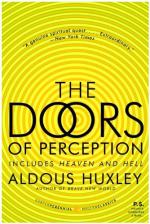
|
| Name: _________________________ | Period: ___________________ |
This test consists of 15 multiple choice questions and 5 short answer questions.
Multiple Choice Questions
1. What poet does the author quote in Appendix 5?
(a) Longfellow.
(b) Wordsworth.
(c) Blake.
(d) Frost.
2. What La Tour painting was acquired by the Louvre in 1934?
(a) "The Painters of Reality."
(b) "The Creation of Man."
(c) "The Robust Workhorse."
(d) "The Venus of Willendorf."
3. What happened to La Tour's reputation as a result of the rise of the new Art of Versailles?
(a) He became even more famous and well-known.
(b) He was forced to change his style to remain popular.
(c) He was forgotten, and his works were attributed to other artists.
(d) His reputation didn't change, but his fans were more loyal than ever.
4. According to the author, who might the old man be in the painting by La Tour referenced at the end of Appendix 4?
(a) St. Paul.
(b) St. Peter.
(c) St. Thomas.
(d) St. Joseph.
5. What is striking about the painting of the butcher bird, to which the author refers at the end of Appendix 5?
(a) It is drawn in painstaking detail.
(b) It stands alone with nothing on any side of it.
(c) It is looking directly at the viewer.
(d) It has an almost human expression.
6. According to Carlyle, why didn't he suffer from any definite fear?
(a) He knew God would protect him.
(b) He had no hope.
(c) Nothing could be worse than his present condition.
(d) He felt that death was merely another stage of existence.
7. According to the author, how did Gericault see the world?
(a) As a disturbing panorama of ideas and wishes.
(b) As a series of visionary apocalypses.
(c) As a giant arena battle.
(d) As a setpiece for dramatic art.
8. How is the subject of a great work of nature art portrayed, according to the author?
(a) As a representation of an ideal form.
(b) As the bearer of some secret message.
(c) As an aspect of a greater whole.
(d) As the center of its own little universe.
9. What is the highest point of the transformation the author discusses in Appendix 6?
(a) Spiritual enlightenment.
(b) Appreciation of nature.
(c) Satisfaction in everyday things.
(d) Mystical experience.
10. What does the candle light do for La Tour's paintings, according to the author?
(a) Creates a unique way to light and shade the subjects.
(b) Allows La Tour to make the background of his paintings dark, and therefore less detailed.
(c) Makes them different from other painter's works, even when the subjects are similar.
(d) Stresses the importance and divinity of something simply existing.
11. What is the title of the work by Carlyle that the author quotes in Appendix 8?
(a) "I, Carlyle."
(b) "Sartor Resartus."
(c) "Dialogue on the Universe."
(d) "Of Men and Gods."
12. What "divine tautology" is expressed by the subjects of great nature art, according to the author?
(a) "To be or not to be."
(b) "I am that I am."
(c) "I am whatever you think I am."
(d) "I think, therefore I am."
13. Which is NOT an object or work of art that the author references in comparison to the subjects of La Tour's paintings?
(a) Pharaoh.
(b) A Bodhisattva from Khmer.
(c) Da Vinci's apostles.
(d) Piero's angels.
14. What does the author say La Tour paints, at the end of Appendix 4?
(a) Cautionary tales.
(b) God's immanence.
(c) Visionary experiences.
(d) Divine retribution.
15. What group of mentally-ill people does the author write about in Appendix 6?
(a) Psychotics.
(b) Schizophrenics.
(c) Neurotics.
(d) Heroin addicts.
Short Answer Questions
1. Which of these is NOT an example given by the author of great nature art?
2. What was the subject of the poem the author quotes in Appendix 5?
3. What is the first Gericault painting mentioned by the author in Appendix 7?
4. According to the author, in what year did the rediscovery of La Tour begin?
5. What is the subject of most of La Tour's paintings?
|
This section contains 676 words (approx. 3 pages at 300 words per page) |

|




